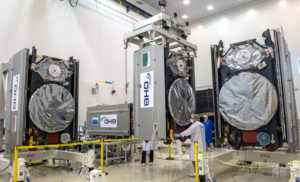Today Europe’s next four Galileo satellites will be launched into orbit by Ariane 5 from Europe’s Spaceport in French Guiana. With this launch the Galileo constellation will reach 26 satellites in space, completing the constellation in overall numbers although further launches are needed to place back-up satellites in orbit. The launch comes at a time when Galileo is into its second year of Initial Operations, with a signal that is better than expected and that is now usable in all new mobile phones. This video looks at Galileo’s story so far and the way forward, interviewing Paul Verhoef, ESA Director of Navigation, and Valter Alpe, Galileo’s Satellite Production and Launch Campaign Manager.
Since the launch of the ‘Galileo In-Orbit Validation Element’ Read more…






